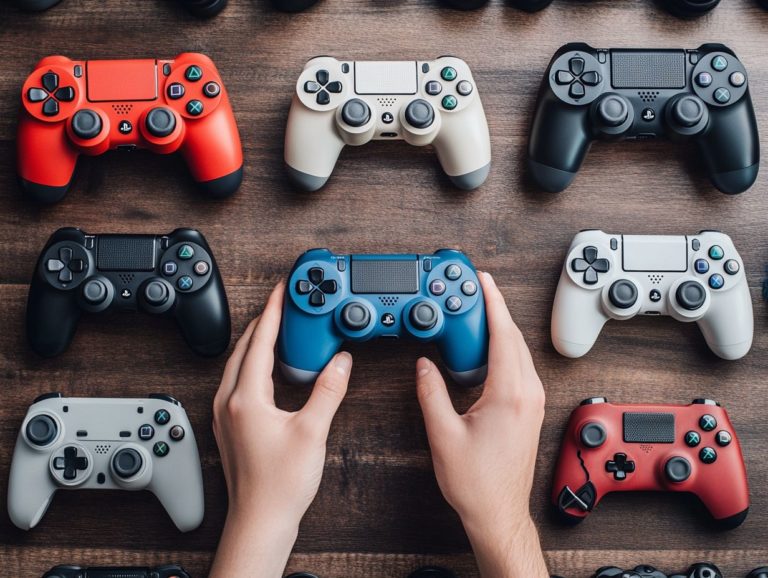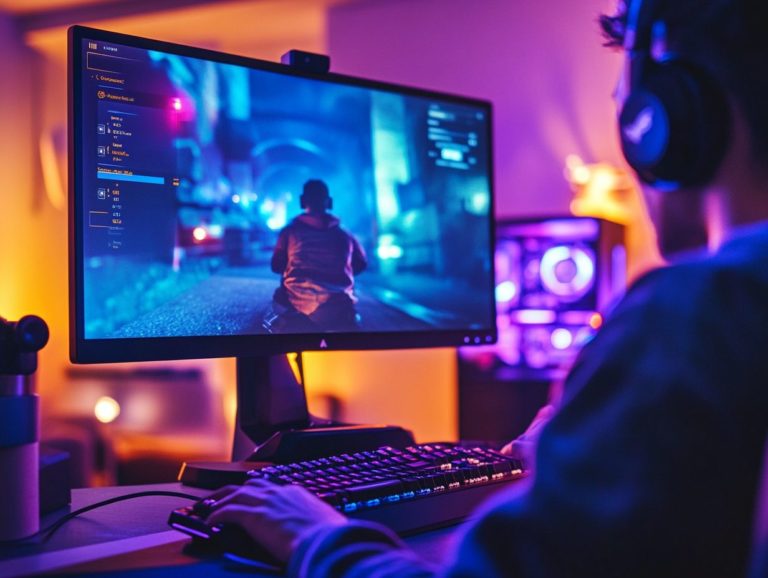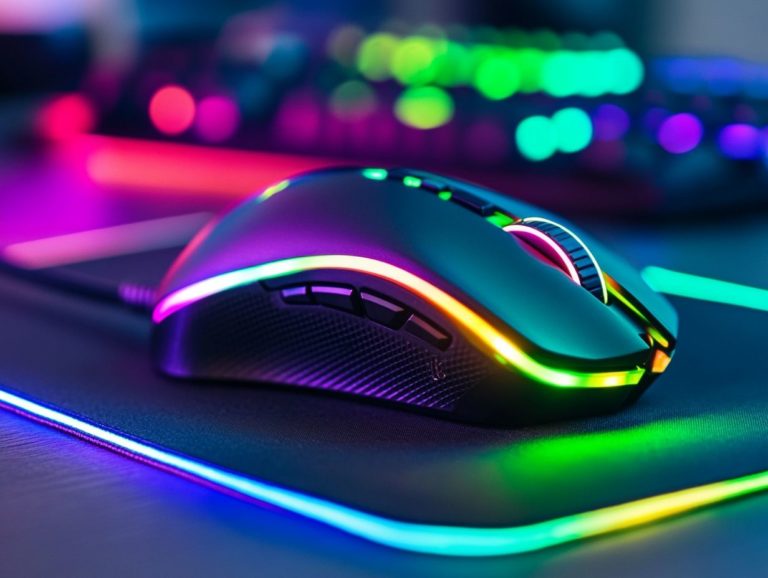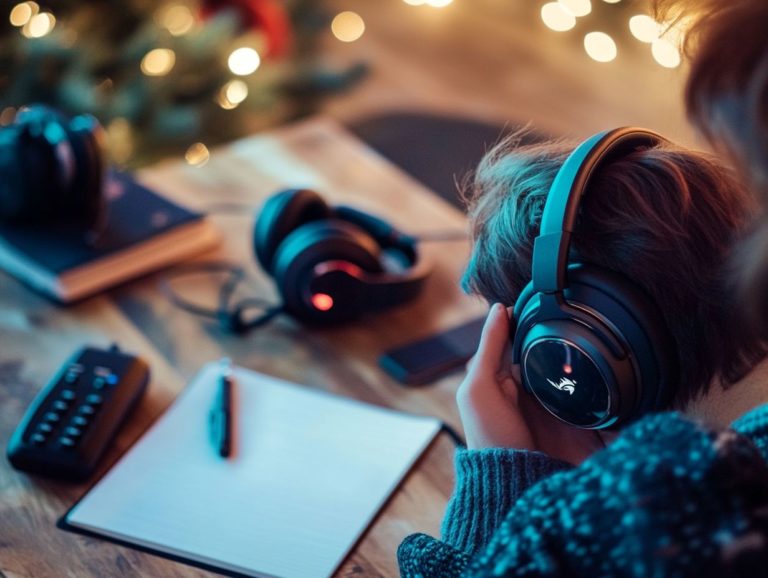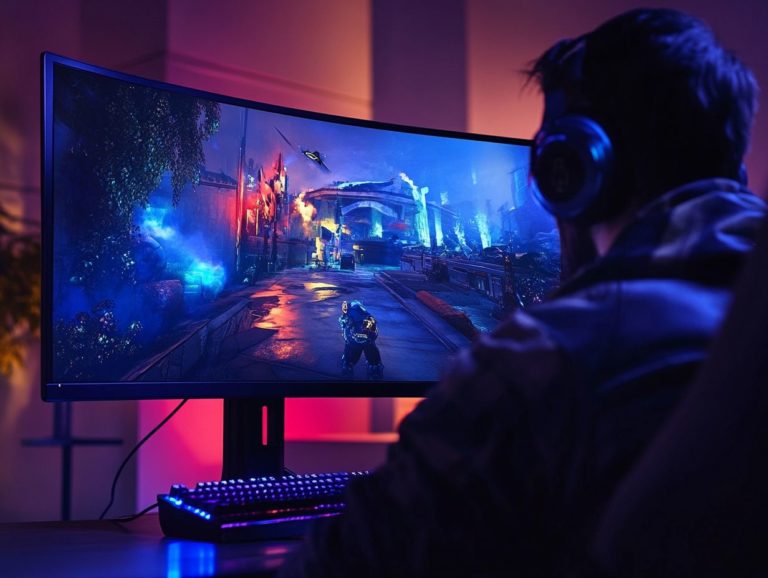what should you look for in vr equipment?
Virtual reality (VR) is revolutionizing how you interact with digital content. It provides immersive environments that whisk you away to entirely new worlds.
With so many options available, choosing the right VR equipment can feel overwhelming.
This article is your go-to guide for all things VR! You will learn about the technology behind it, explore various types of devices, and pinpoint crucial factors to consider before making your purchase.
It showcases popular products currently available, offers tips for optimal use, and ensures you are fully prepared for your exciting VR journey.
Contents
Key Takeaways:
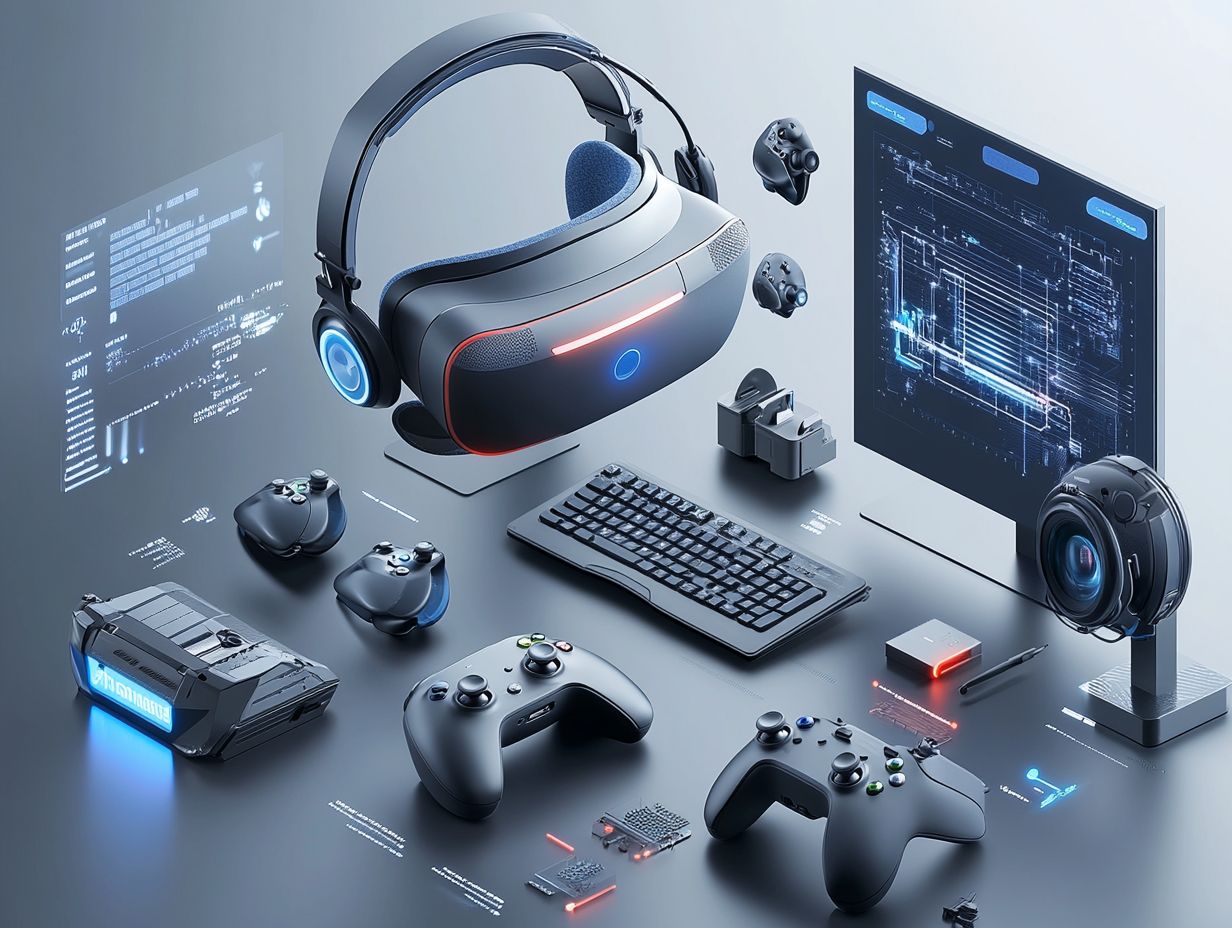
Choose VR equipment that is compatible with your devices to ensure a seamless experience.
Consider the comfort and fit of the equipment to avoid discomfort or distractions while using it.
Look for features and functionality that meet your specific needs, such as motion tracking or hand controllers.
Understanding VR Equipment
Understanding VR equipment is essential for anyone diving into the immersive realm of virtual reality. Familiarize yourself with the different types of VR headsets available.
- Standalone headsets provide all-in-one solutions, freeing you from the need for a gaming PC.
- Tethered VR headsets connect to a powerful gaming rig, delivering superior performance.
Knowing key specifications can significantly enhance your virtual experiences. Important specs include display resolution, tracking methods (both outside-in and inside-out), and cost considerations.
What is Virtual Reality?
Virtual reality immerses you in a simulated experience that can replicate familiar environments or transport you to entirely new worlds. With specialized equipment like VR headsets, dive into these lifelike settings and explore them as if they were real.
This cutting-edge technology has transformative applications across various fields, especially in gaming, education, and professional training. In gaming, VR revolutionizes gameplay, allowing you to step directly into the action and engage with dynamic, three-dimensional spaces.
In education, it opens up interactive learning opportunities, from virtual field trips to immersive science experiments. This enhances your engagement and knowledge retention.
For training whether mastering medical procedures or simulating hazardous environments VR offers hands-on experience without associated risks. Advanced graphics, motion tracking, and spatial audio combine to create immersive environments that truly captivate your senses.
Types of VR Equipment
When exploring VR equipment, you ll typically encounter two primary categories: standalone headsets that operate independently and tethered VR systems that rely on a powerful gaming PC for enhanced performance and graphics.
Standalone headsets, like the Oculus Quest series, offer a fully contained experience. Immerse yourself without the hassle of cables or external hardware. On the other hand, tethered systems, such as the HTC Vive or Oculus Rift, need a connection to a high-performance PC, delivering superior graphics and performance that can elevate your experience.
Specifications like tracking methods play a crucial role in how you interact with the virtual world. Inside-out tracking allows you to move freely without external sensors, while outside-in tracking offers more precise spatial awareness.
Additionally, display resolution varies significantly between these two types of headsets, impacting clarity and immersion in the virtual environments you explore, ultimately enhancing your overall gaming experience.
Factors to Consider Before Buying VR Equipment
Before investing in VR equipment, weigh several factors to choose the perfect headset for your needs.
Consider the costs involved, compatibility with your existing devices like gaming consoles or PCs, and the comfort and fit for extended use.
Pay attention to essential features that can enhance both functionality and your overall experience.
Ready to choose your VR gear? Let s explore the essentials!
Compatibility with Devices
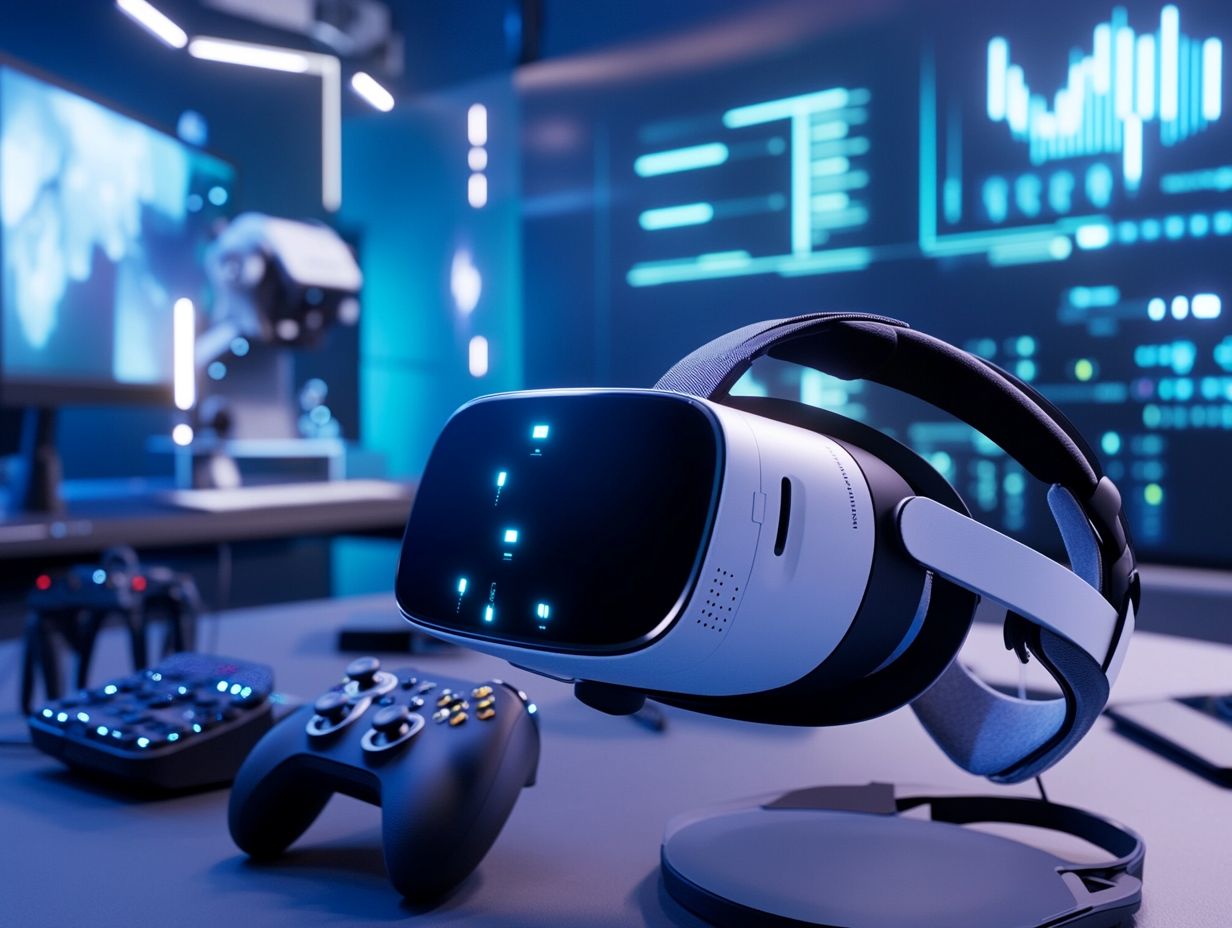
When selecting a VR headset, compatibility with your devices should be at the forefront of your mind. Some headsets demand a powerful gaming PC for a truly optimal experience. Others are designed to work effortlessly with gaming consoles or can even operate independently.
Take high-end VR headsets like the Valve Index. They really shine when connected to gaming PCs equipped with advanced graphics cards and plenty of RAM. This ensures you enjoy immersive experiences without any pesky lag.
Standalone headsets, such as the Oculus Quest, let you dive into virtual worlds without the hassle of external hardware. However, they might not deliver the same level of detail. If you re using popular consoles like the PlayStation 5, you ll find that the VR experience can be significantly enhanced through optimized performance and exclusive titles.
This shows why making the right choice is so important for a thrilling VR experience! The pairing decision profoundly impacts how richly you can engage with virtual environments.
Comfort and Fit
Comfort and fit are vital when choosing a VR headset. Prolonged use can lead to discomfort, so it s crucial to select a lightweight headset with ample padding.
Well-designed controllers also matter for a truly immersive experience. As you spend hours exploring virtual worlds, the importance of headset comfort becomes clear. A headset that feels too heavy or lacks proper cushioning can disrupt your enjoyment.
Look for adjustable headbands and customizable fits to find your perfect setup. These features accommodate various head sizes and shapes. Battery life matters too. A headset that needs frequent charging can ruin your gaming fun.
All these elements work together to enhance your overall performance, allowing you to focus on the adventures ahead instead of the hardware itself.
Features and Functionality
When evaluating VR headsets, consider the features and functionalities that elevate your user experience. Pay attention to tracking methods either inside-out or outside-in as well as hand tracking capabilities, controller accuracy, audio quality, and visual clarity.
Inside-out tracking means the headset has cameras that understand its position. Outside-in tracking uses separate sensors placed around the room. Each tracking method plays a vital role in gaming performance and your overall interaction within virtual environments.
High-quality visuals paired with immersive audio create an incredibly convincing atmosphere that draws you into the narrative. This transforms you from a mere spectator into an active participant in unfolding digital worlds, enriching your overall experience.
Popular VR Equipment on the Market
Explore top VR headsets like the Meta Quest 3, HTC Vive Pro 2, and the Valve Index to elevate your gaming experience now! Each of these headsets presents distinctive features and capabilities, tailored to meet a variety of user preferences.
Reviews and Comparisons
When seeking VR headset reviews, you’ll find the Meta Quest 3, HTC Vive Pro 2, and Valve Index often topping the list. Each of these headsets boasts robust gaming libraries and unique features tailored to various gaming experiences.
The Meta Quest 3 shines with its wireless convenience and extensive catalog of exclusives, making it a go-to for casual gamers and families. Users frequently rave about its intuitive setup and stunning visuals. However, some may raise concerns about its durability and battery life.
In contrast, the HTC Vive Pro 2 caters more to serious gamers and professionals, offering superior graphics and a high-resolution display that immerses you in detailed environments. Be prepared for a significant investment, both in terms of finances and space required.
Then there s the Valve Index, celebrated for its precise tracking and comfortable fit, making it a great choice for those marathon gaming sessions. While it may not have the extensive game library of its competitors, enthusiasts value its solid build quality and impressive hand-tracking capabilities, making it ideal for VR developers and hardcore gamers alike.
Tips for Using VR Equipment
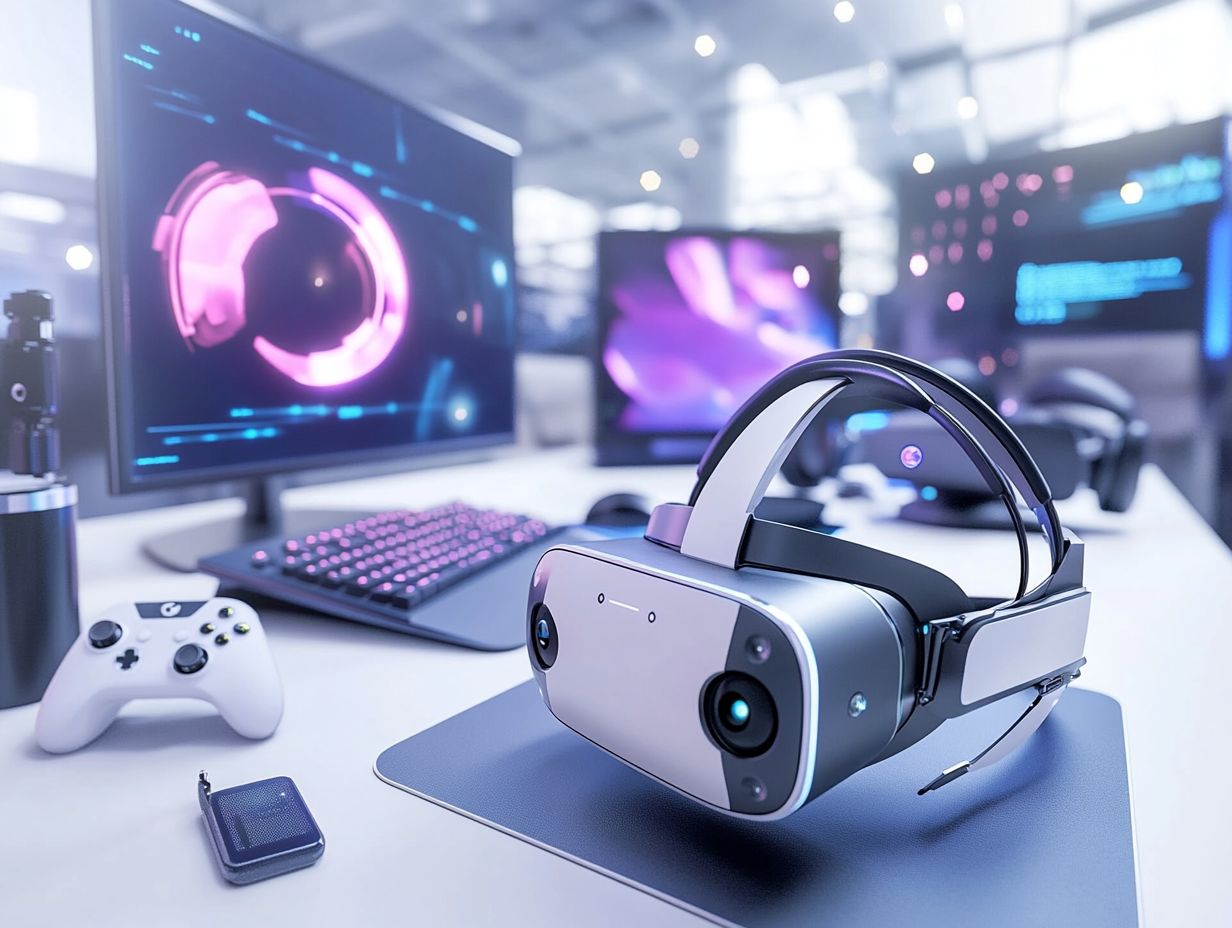
To fully immerse yourself in your VR experience and maximize your gaming performance, it’s essential to adopt a user-friendly setup.
By following these tips and best practices, you’ll enhance your immersive adventures while minimizing potential issues, such as motion sickness.
Proper Set-Up and Maintenance
A meticulous setup and maintenance routine for your VR equipment can significantly improve the headset’s ability to follow your movements accurately and overall performance. This creates a user-friendly experience that immerses you in virtual worlds without technical hiccups.
Start by selecting an adequate space for unimpeded movement. Ideally, clear away any furniture or objects that might hinder your exploration. Positioning the sensors or cameras at the right height and angle is crucial for optimal tracking. Ensuring the area is well-lit will further enhance performance accuracy.
Remember to regularly check for firmware updates and keep your equipment clean by dusting off sensors and lenses. This diligence will help maintain smooth functionality over time.
Also, periodically recalibrate your devices to uphold precision, ensuring a seamless transition into truly immersive experiences.
Best Practices for Optimal Experience
To achieve the best practices for an optimal VR experience, create an immersive environment emphasizing comfort while minimizing distractions. This allows you to fully engage in your gaming adventures.
Begin by establishing a designated play area free from interruptions. Ensure the space is well-lit and decluttered, as this can significantly enhance your concentration and immersion in the virtual world.
Don t miss out! Taking regular breaks is crucial to ward off fatigue and discomfort. Prolonged use can lead to unpleasant side effects like motion sickness or eye strain.
Explore the comfort features your VR equipment offers, such as adjustable head straps and customizable field of view settings, tailoring the experience to your personal preferences.
By closely observing your own experiences, you ll discover what adjustments bring you the most enjoyment and satisfaction, ultimately enriching your overall encounter with virtual reality.
Frequently Asked Questions
What should you look for in VR equipment?
When shopping for VR equipment, consider a few key factors: comfort, resolution, tracking capabilities, content compatibility, and price.
Why is comfort important in VR equipment?
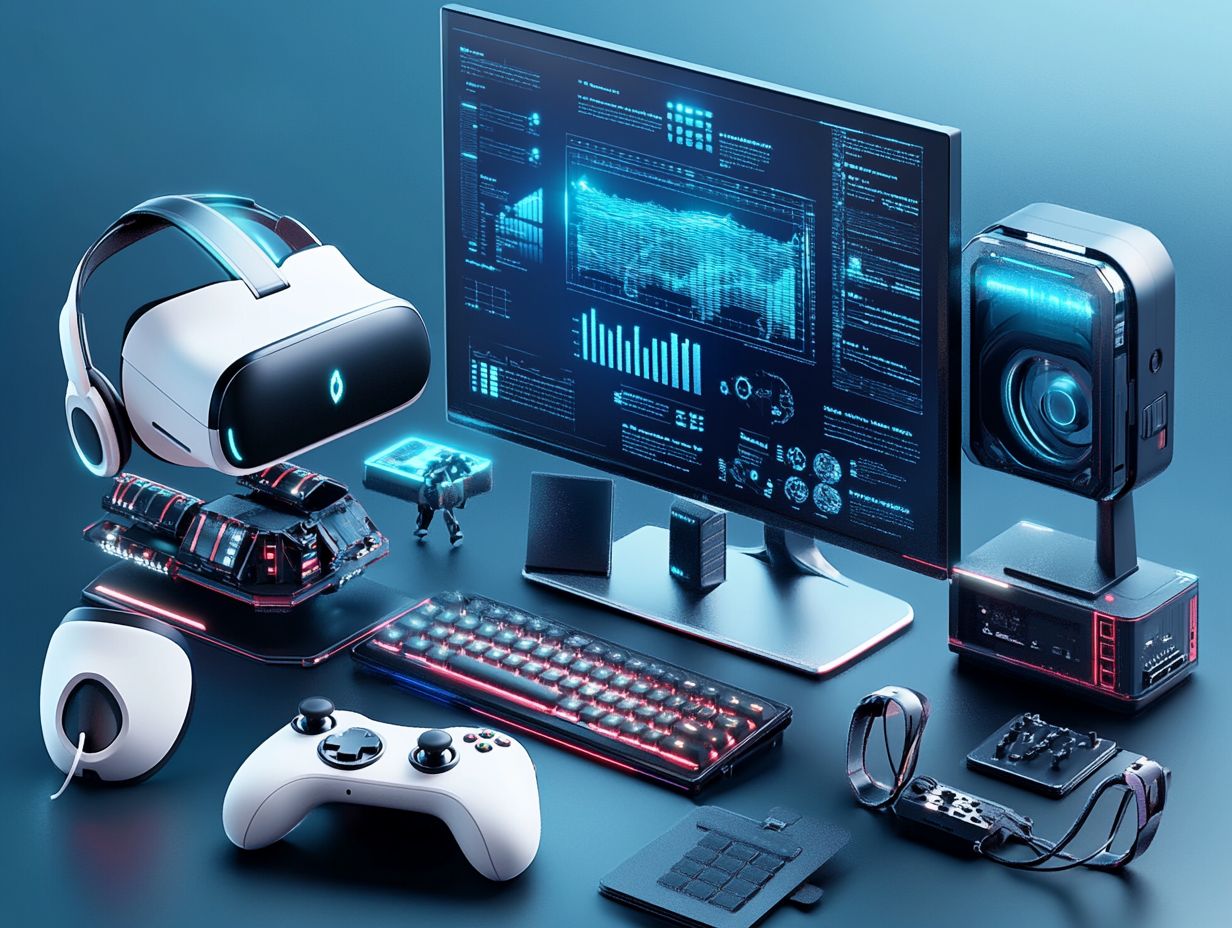
Since VR experiences can be immersive and last for extended periods, comfort is crucial. You deserve a headset that feels great, especially during those long gaming sessions! Look for equipment with adjustable straps, cushioned padding, and lightweight materials to ensure a comfortable fit.
How important is resolution in VR equipment?
In VR, resolution refers to the quality and clarity of the visual display. A higher resolution results in a more realistic and immersive experience. Look for equipment with at least 1080×1200 resolution for each eye.
Explore more VR experiences and products to enhance your gaming adventure!
What should you know about tracking capabilities?
In VR, tracking means the device can see and respond to your movements. Look for equipment that tracks your movements in six different directions for more precise and realistic experiences.
How can you ensure your VR equipment is compatible with content?
Check if your VR equipment works with the content you want to enjoy before buying it. Some devices only support specific platforms or types of content.
Is price the most important factor in choosing VR equipment?
Price matters, but it’s not the only thing to consider. Find the right balance between cost and quality to ensure an exciting and satisfying VR experience.


